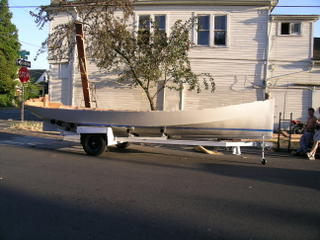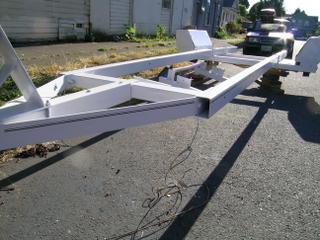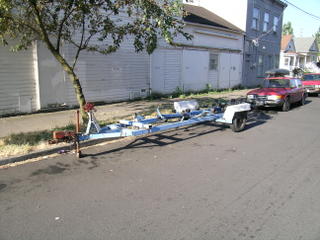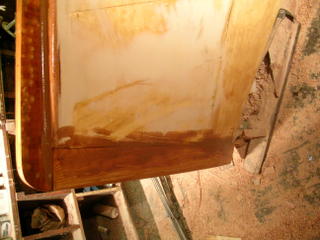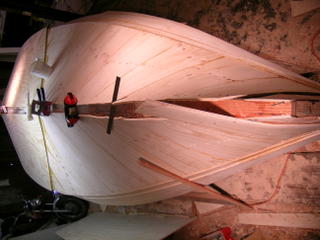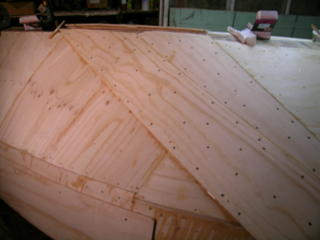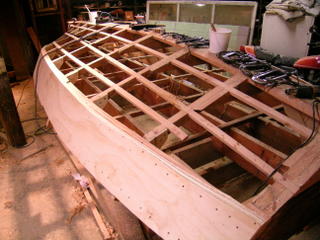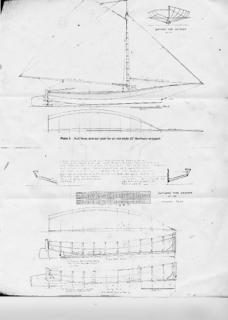Having done practially no woodworking (short of building a small bookcase and some birdhouses for mom), I had a pretty limited tool supply--some wrenches, pliers, a jig saw, an older cordless drill, and a smattering of other odds and ends. Lucky for me, my landlord/housemate (who's garage I'm building this in) has a cabinet shop convieniently attached to the garage. While there was no way I would be using any of his hand tools, he offered to let me use his table saw (provided I buy my own blades), drill press, and bandsaw. My father sent me a few chisels and a couple planes when I told him I was planning on building a boat and the rest of my hand tools I've bought used from ebay, garage sales and antique shops.
Almost every used tool I've bought has requires a fair amount of work to get it back into working condition. I lapped all of the plane soles using a piece of glass with sandpaper on it. Blades were reground by hand on a course waterstone using a Veritas guide, then honed on 1000 grit and polished on 6000 grit waterstones. The backs of all the blades were flattened on the 1000 grit and polished on the 6000 as well. Chisels recieved a similar treatment. Once the blades were done the first time, I can easily hone them by hand a number of times before I start to round the face and the blade and have to use my guide to flatten it again.
Current inventory (which is really quite excessive....)
Stanley/Baily #3,4, 4 1/2, 5, 5 1/2, 7, 9 1/2 block plane and a low angle block plane, #78 duplex, #113 compass and an old little finger plane.
A variety of japanese chisels (some new, some antique) from 1/4"--1 1/4", a set of marples chisels (christmas present from the parents), 2" fulton slick, 3 1/4" generic slick, 3" greenlee slick, a huge LL White gouge (somebody told me it was for boatbuilding and I'm a sucker for that...).
For powertools, I use a 15.5V Panasonic NiMH cordless drill which, in the consumer reports test, matched or outperformed most 18V models. It has plenty of torque and the battery life is fantastic. I have a couple cheapo cordless drills which are fine for drilling pilot holes but can't drive more that a few screws on a charge. A bosch jigsaw which I've had since childhood, a bosch router with a combination plunge/fixed base, a bosch 3 1/4" power plane, and a generic belt sander disk sander and circular saw.
Amazingly, I have used almost everything. A couple of the smaller planes are really uneeded as are some of the smaller chisels.

